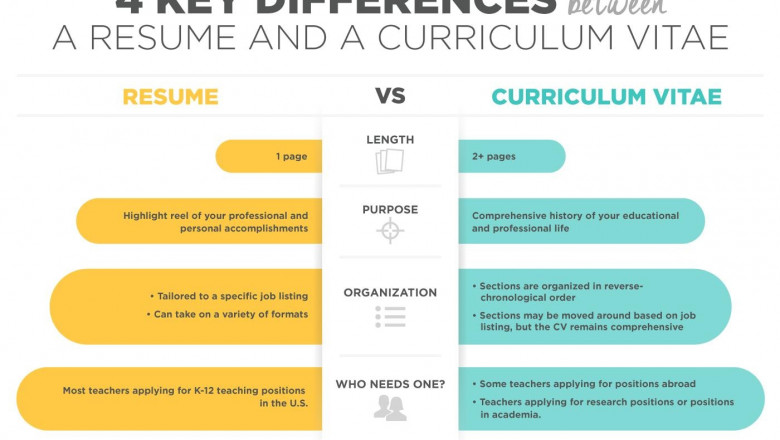views
What Is the Anatomy of Curriculum Vitae?
The resume focuses on particular job qualifications through brief targeted documentation, but the CV delivers an extensive academic and professional timeline. The CV serves educational and research purposes as well as specialized positions, and it maintains its use for international employment outside US territory, particularly in European and Asian countries.
Job seekers must build their CV content to show qualifications clearly because this approach establishes a strong initial connection with prospective employers and academic institutions. The professional CV contains important sections that organize your employment background for clear presentation. The key components that every CV should contain are described below.
1. Contact Information
Your CV must start with your contact information in the document's uppermost section. Potential employers and academic institutions will find it easy to reach you through this section. The contact section needs to display accurate information that remains current. Include:
· The CV should begin with your complete name displayed prominently at the top of the first page.
· The phone number listed should be up-to-date and dependable for others to reach you.
· Choose a professional-sounding email address. The use of nicknames and additional numbers in contact information should be avoided.
· Some candidates list their home address, yet this practice has declined because of privacy reasons. Some regions and specific job sectors require physical addresses to be included, but this practice continues to decline in most cases.
· Including professional LinkedIn profiles, personal websites, and portfolios that display relevant field or position work is appropriate when added through links.
2. Personal Statement or Objective (Optional)
The personal statement or career objective consists of a two- to four-sentence section summarizing your professional goals, key experiences, and strengths. The personal section exists as an optional element, which makes it easier for readers to understand both your professional background and your current career goals. Address this part of your application to demonstrate your goals, especially when seeking academic or research positions.
3. Education
Academics and researchers should consider their education section as the most essential CV part. You must arrange your academic degrees starting from the newest in reverse order. Include:
- Degree(s): The type of degree(s) you have obtained (e.g., Bachelor's, Master's, Ph.D.).
- Institution(s): Name the universities or colleges you attended.
4. Work Experience
The professional experience section shows your work history while linking it to the target position you seek. Rephrase the work experience section following the same chronological order method used for education.
5. Skills
The section displays your technical abilities, hard skills and soft characteristics. Focus this part on skills that match the requirements of your target position. For example:
The list includes technical abilities, including computer programming languages, laboratory techniques, software tools, and engineering processes. Include your language proficiency level when you speak multiple languages by noting your proficiency ranging from fluent to intermediate and basic. Interpersonal capabilities such as communication, leadership, teamwork, and problem-solving abilities demonstrate your professional value to a work environment. You should disclose the exact extent of your abilities because employers will evaluate your skills through tests and interviews.
6. Publications, Research, and Projects
Research and academic professionals need to treat this section as their main focus. This section displays professional contributions, research projects, and published works related to the job opening. Include:
You should list your research projects by describing their objectives and outcomes. Include all scholarly works by listing research papers, journal articles, and books with proper citation methods. Any public speaking events, such as presentations or conferences, should be included.
7. Certifications and Professional Development
A list of relevant certifications, training, and professional development courses should appear in this part of your resume. Including these credentials shows your dedication to lifetime learning and industry position keeping. List certifications like:
• Project Management Professional (PMP)
• Certified Public Accountant (CPA)
• Language certifications (e.g., TOEFL, IELTS)
• Any other industry-specific credentials
8. Awards and Honors
It is essential to mention all significant academic and professional honors, including awards and fellowships received throughout your educational and professional journey. The section demonstrates your achievements while strengthening your professional reputation.
9. The Section on Volunteer Work
Early-career professionals lacking extensive work experience should include details about their volunteer work, internships, and extracurricular activities to showcase their leadership abilities, teamwork skills, and other essential traits. CV Writing Bahrain demonstrates to others that you possess diverse abilities beyond your professional skills.
10. References
The final section of CVs includes two approaches for reference listing: direct references or a statement indicating references exist upon request. Your references consist of people who can verify your academic and professional abilities. Inform each reference about the possibility of receiving an inquiry from you.














Comments
0 comment